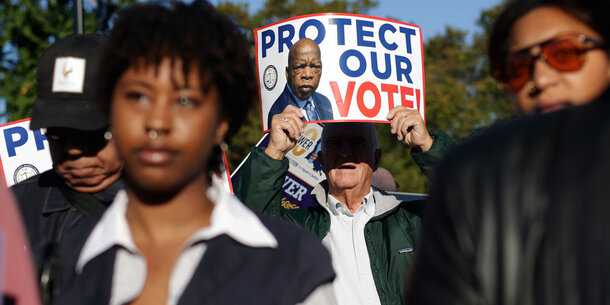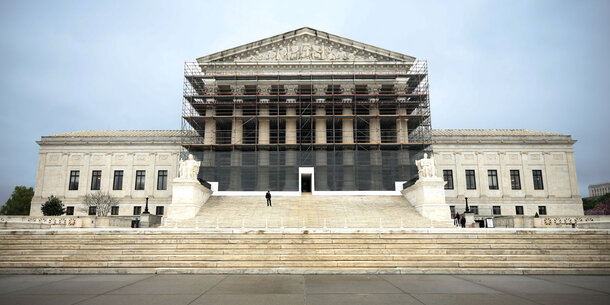Gerrymandering has real-world policy consequences, but rarely have those been as frighteningly illustrated than with what has played out in Wisconsin the past several days.
With the coronavirus ravaging the state, Wisconsin Gov. Tony Evers asked lawmakers last Friday to switch the state’s April elections to an all-mail election, warning that in-person voting in the middle of a pandemic would be “a very unnecessary public health risk.” Others called for postponement of the election from April to June, and election officials around the state reported difficulties recruiting enough poll workers to safely run an election.
But Wisconsin Republicans were eager for a hotly contested state Supreme Court election to take place. And with a near supermajority in the state assembly thanks to one of the most aggressive gerrymanders in U.S. history, they ignored calls to postpone the elections, dismissively convening and then adjourning the special legislative session called by the governor in just 17 seconds.
The result on Tuesday were long lines in Milwaukee, where only five polling places in the whole city were open. Republicans could act brazenly without fear of electoral blowback because gerrymandered maps make it virtually impossible for them to ever lose their legislative majority. Wisconsin’s maps were crafted with such micro-precision that even if Democrats managed to win a historically high 54 percent of the two-party vote – a level they’ve reached only once in the last 20 years — Republicans would still end up with a solid nine-seat majority in the state assembly.
In fact, Wisconsin’s maps are so gerrymandered that Republicans can win close to a supermajority of house seats even with a minority of the vote. Analyses of the maps in the lawsuit challenging the maps showed that Republicans are a lock to win 60 percent of statehouse seats even if they win just 48 percent of the vote. This is precisely what happened in 2018, when Democrats won a majority of the statewide vote and swept statewide offices, but Republicans saw the size of their state-house delegation reduced by only a single seat, going from 64 of 99 seats to 63 seats.
The current maps are far different than maps of the prior decade, which were drawn by a court in 2001 after legislative deadlock. Those maps were much more electorally responsive, allowing control of the state assembly to flip between the parties several times over the course of the decade as the mood of voters shifted — exactly what one would expect in one of the country’s quintessential swing states.
In 2016, a panel of three federal judges struck down Wisconsin’s current state assembly maps as an unconstitutional partisan gerrymander, finding that Republicans had drawn maps with the intent “to secure the Republican Party’s control of the state legislature for the [decade].” But the Supreme Court sent the case back to the lower court. Then, while the case was on the eve of a retrial, the Supreme Court ruled in a case from North Carolina, Rucho v. Common Cause, that partisan gerrymandering claims could not be considered by federal courts.
With federal courts out of the picture, Wisconsin’s gerrymandered status quo was locked in.
To be sure, gerrymandering isn’t the only reason Wisconsin ended up in the mess that it has. This decade, Wisconsin has been home to a string of attacks on democracy, from discriminatory voter ID laws to efforts to questionable purges of voter rolls. And, even if Democrats had held the state assembly, an effort to hold an all-mail election might have been blocked by the Republican-controlled state senate. But the decision to do so would have carried far greater political risk.
By baking electoral results into the DNA of districts, gerrymandering has taken away an important check and balance from Wisconsin voters. One consequence is an election on Tuesday that Wisconsin’s largest paper has called “the most undemocratic in the state’s history.”



